Corporate museums lie somewhere in between the academic world of museums and the business world of companies. They also serve as organizations that help companies manage many aspects of their operations, including public relations, branding, advertising, and human resources. This article series will explore corporate museums, their roles and functions, and the opportunities they present, all with the help of PR professionals.
Developing Sports Culture at Asics Sports Museum
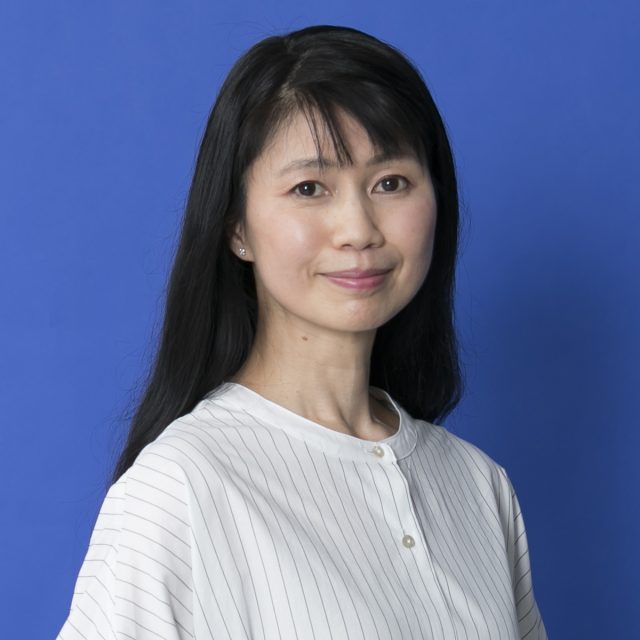
Sachiko Tarumi, PR Consulting Dentsu Inc.
Asics is one of Japan’s leading sporting goods brands. Through the company’s history, it has grown alongside the development of the sports world. At the Tokyo 2020 Olympic and Paralympic Games, Asics supported the performances of many Japanese athletes including the track and field, baseball, and wrestling teams, as well as athletes from around the world like American discus thrower Valarie Allman and Bermudian triathlete Flora Duffy. In this article, we explore Asics Sports Museum, which exhibits the many products developed by the company since its founding and records achieved by the domestic and international athletes who have worn them. We will also look at how the Asics Sports Museum conveys the Latin phrase Anima Sana in Corpore Sano, or “A sound mind in a sound body,” that the company’s name derives from.
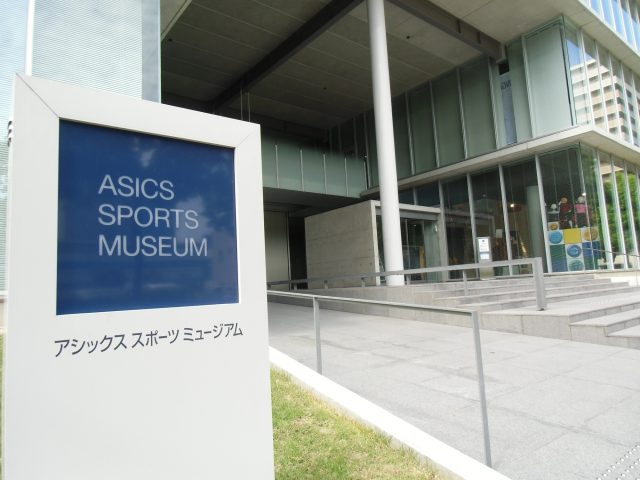
Front entrance of Asics Sports Museum (Photo courtesy of Asics)
Built in 2009 as part of a project to celebrate Asics’s 60th anniversary, Asics Sports Museum is in the East Building of the head office, located on Port Island, an artificial island in Kobe. The museum, which people can enter for free, also serves as a place for the company to share inspiration from sports and contribute to the future of sports culture. The museum has been visited by elementary and junior high school students from the local Kobe area on school trips, students studying sports, and educators. A stockholder tour was also held at the museum before COVID-19.
Many athletes associated with the company like marathon runners Naoko Takahashi and Yuko Arimori, and rugby player Michael Leitch, have visited the museum. Autographs from many athletes are displayed on large boards inside, and another is currently being filled. The museum saw an average of 12,000 visitors of different ages and walks of life every year up until 2019.
The museum has an “Athlete Field” on the first floor and a “History Field” on the second. Both fields are about 450 square meters and have around 350 products on display at any time. Most of the products were used by athletes who Asics supported and are autographed. English and Chinese audio guides are available for overseas visitors. In November 2022, the museum also launched Japanese and English virtual tours on their website so that people can visit from afar even during the height of COVID-19.
Attracting people to sports through the amazing achievements of athletes and their shoes
Visitors can experience the performances of top-trained athletes on the first floor’s exhibit, “Athlete Field.” Virtual Vision, in conjunction with a 138-inch Super Vision screen and LED lights mounted on the track, helps visitors leave with memorable experiences and, in turn, draws them to the world of athletes and sports. Anyone can see what a 100-meter sprint done in 9.58 seconds, the fastest time ever, looks like.
You can even see marathon runner Mizuki Noguchi’s footprints on the field to get a better understanding of what her average stride length, which is said to be longer than her height, was during competition. She ran 42.195 km with a dynamic, almost jumping stride. Even if you’re not an Asics or sports fan, you can’t help but be impressed by the amazing athletes and enjoy the experiences offered at this exhibit.
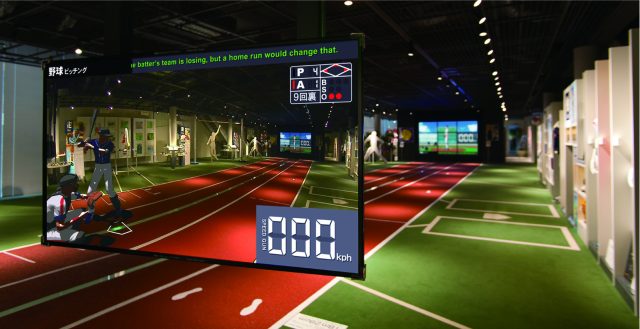
Athlete Field on the first floor (Photo courtesy of Asics)
Also displayed on the floor are shoes from a variety of competitions that Asics has supported. Every shoe on display is unique to the sport it was worn in and the athlete to whom it belonged. Running and sprint spikes are only designed to help athletes run forward, while basketball shoes are designed to help them move laterally and to protect them from sprains. Giving visitors a chance to compare the characteristics of these sports and the shoes of each athlete is also one of the ways the museum tries to get them interested in sports.
The history of Asics and athletes inside sports shoes
History Field on the second floor also displays products used by the Asics athletes but is mainly for showcasing the company’s corporate philosophy and history. The Athlete History exhibit spans half the floor and displays shoes and other products once used by famous Asics athletes, as well as the history of their careers and their achievements.
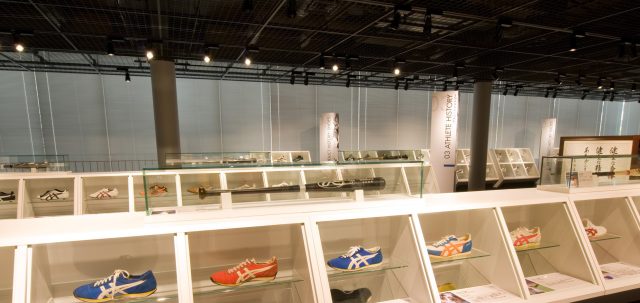
Athlete History exhibit, part of History Field on the second floor (Photo courtesy of Asics)
The other half is dedicated to sporting events through the decades, Asics products, and the athletes who wore them. Through the accomplishments of these athletes, the Corporate History exhibit shows how sports evolved after World War II, Asics’s business strategy, and the spirit in which Asics products were made. This exhibit begins with old basketball shoes and displays historic shoes that the company has produced.
Nurturing the youth and recovering from World War II through sports
Although the name Asics comes from its founding philosophy, Anima Sana In Corpore Sano, it was originally Onitsuka Co., Ltd. when established in 1949 during the tumultuous postwar Japan. The founder, Kihachiro Onitsuka, was from Tottori Prefecture, and his original family name was Sakaguchi. He passed the conscription examination and after serving as an apprentice officer became an officer but the war ended before he was deployed.
Kihachiro became acquainted with Lieutenant Kotoshi Ueda from, the same regiment when he was an apprentice officer. Ueda told Kihachiro that if something were to happen to him, he would like him to take care of the Onitsuka couple in Kobe, who were scheduled to take Ueda into their family. Honoring Ueda’s will, Kihachiro was adopted by the Onitsuka family in his stead.
After the war, the black markets in Sannomiya and Motomachi in Kobe were teeming with delinquent teenagers who had been orphaned by the war. Since he was lucky enough to survive the war, Kihachiro wanted to spend his life improving Japan but wasn’t sure how. When he consulted Kohei Horei, director of the health and physical education section of the Hyogo Prefectural Board of Education whom he had befriended in the military, he was taken aback by an ancient Roman proverb that Kohei quoted. “Pray for a sound mind in a sound body.” At that time, there were many companies making rubber shoes in Kobe, so Kihachiro founded a sports shoe company because he wanted to improve the situation for young people with sports shoes that helped people become more physically and mentally healthy.
Using Kirimomi Shoho, a business strategy that focuses on a single point in order to confront large companies, he developed basketball shoes, which were said to be the most difficult to manufacture and launched the company’s first line of basketball shoes in 1950. He continued to make improvements and a year after the company’s founding, he created a shoe that had grips on its soles, inspired by the suckers on vinegared octopus he was enjoying one night. It was a ground-breaking product from Onitsuka.
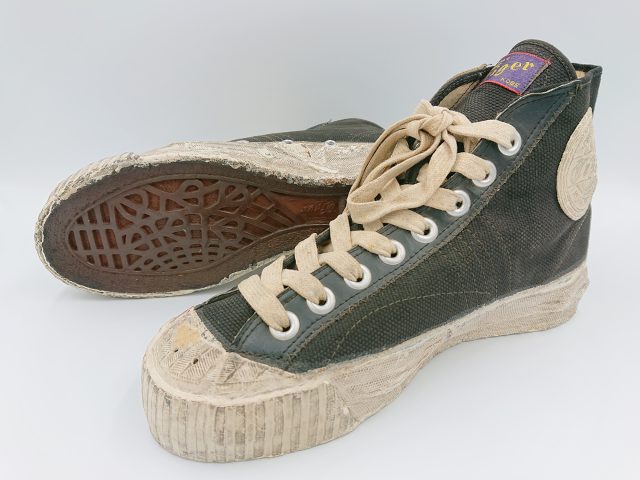
Suction Cup Basketball Shoes, “Champion Tiger” (Photo courtesy of Asics)
Asics puts athletes first
Asics goes to practices and competitions and speaks with athletes and coaches to find challenges and develop products that solve them. This has been the company’s credo since its founding and has evolved with a scientific approach. A good example is marathon running. As seen in the NHK Taiga drama, “Idaten: The Epic Marathon to Tokyo,” the marathon is a sport that Japan has excelled at since before World War II, and it was popular at the time of the company’s founding.
At the time, runners were said to be full-fledged marathoners only if they ran through pain and may are said to have run with blistered and bloody feet. Onitsuka visited a medical doctor at Osaka University to learn why blisters form. He learned that fluids try to cool parts where heat is generated when feet hit the ground and move inside shoes. That’s when Onitsuka took inspiration from air-cooled engines and applied it to shoes to prevent their soles from getting hot.
Small holes were added to the tip and sides of shoes and a large hole was made to the tongue for ventilation. Furthermore, the center of the sole was curved and lifted, so that when the foot reaches the ground, hot air inside the shoe is pushed out using the principle of bellows, and when it returns to its original curved shape, air enters from the outside and cools the inside.
Because marathon runners at the time described it as shoes that work magic, it was named Magic Runner and became popular. Onitsuka’s marathon shoes became a symbol of the company’s “summit strategy” that targeted top athletes. At the 1964 Tokyo Olympic Games, athletes and teams wearing the company’s shoes won 47 medals. Since then, many Japanese marathon runners have chosen Onitsuka shoes.
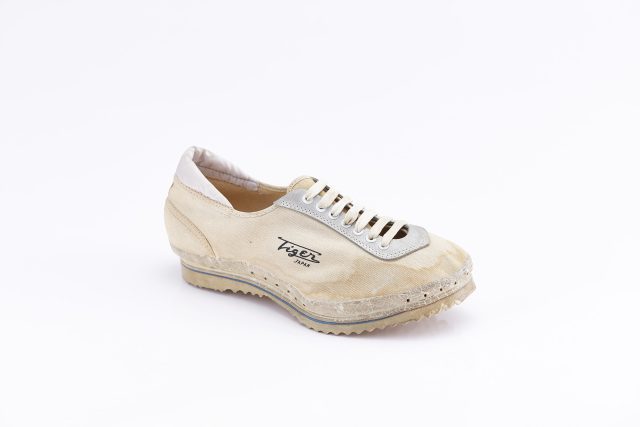
First generation Magic Runner (Photo courtesy of Asics)
Leading the pack with competition marathon shoes
The company continued to make steady progress even after changing their name to Asics. At the 1988 Seoul Olympic Games, Asics shoes won gold in both the men’s and women’s races and at the 1992 Barcelona Olympic Games, Asics shoes won gold and silver.
Asics was one of the few companies that had a competition running category. Most companies had a running shoes category that consisted of general running shoes and marathon shoes. Asics’ range of marathon shoes and frequency product launches exceeded those of competitors. That is because Asics developed shoes for different bone, joint structures, and other physical characteristics (alignment), and their running styles.
In addition, Asics measured the range of motion and made shoes tailored to each top athlete. Injuries are often closely related to the shoes athletes wear and many switched to Asics after getting hurt. Heading into the 2000s, the company continued to support the accomplishments of Naoko Takahashi, Mizuki Noguchi, and many other athletes in Japan and abroad.
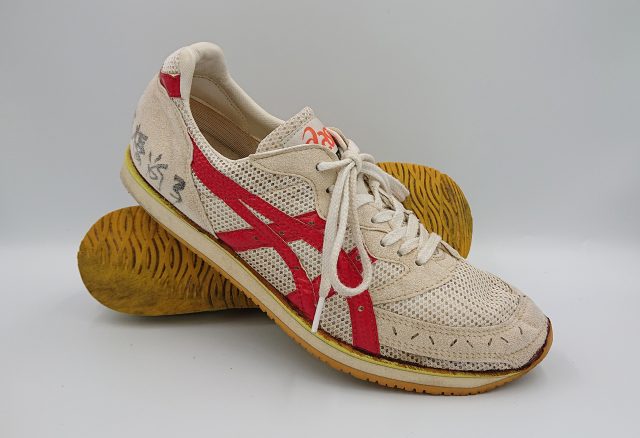
Naoko Takahashi’s shoes, “Sortie Japan (Custom Order)” (Photo courtesy of Asics)
A scientific approach to shoes for everyday runners
The jogging and running population took off in the 1980s. Ever since, research for the shoes of the world’s top runners has been used in jogging and running shoes for everyday runners. Asics has also established itself as one of the top companies for leisure runners. According to Yoshimori Fukui of the Asics Sports Museum Archive team, everyone runs differently.
For example, when a foot lands from the heel, a natural movement called pronation, in which the heel collapses slightly inward to dissipate the impact, occurs. A person with a large pelvis and long legs has a large pronation, and if the tilt is too large, it is easy to hurt the knee and ankle, and it is easy to get injured while running. This is why Asics divided running styles into three types, developed shoes that are less likely to cause injury according to the style, and also expanded its lineup for everyday runners.
Established in 1985, Asics Institute of Sport Science analyzes the characteristics of body movements in detail from every perspective using a scientific approach that focuses on the human body. The exhibition on the first floor displayed eight major functions of running shoes. Starting with the fit of shoes, which is hard to measure, other functions of shoes like their cushioning, grip, durability, flexibility, lightness, breathability, and stability are all quantified and measured by each wearer, and a scientific approach can be used to create the best shoe for them. More than half a century after Magic Runner, shoes for long distance running have evolved to this level.
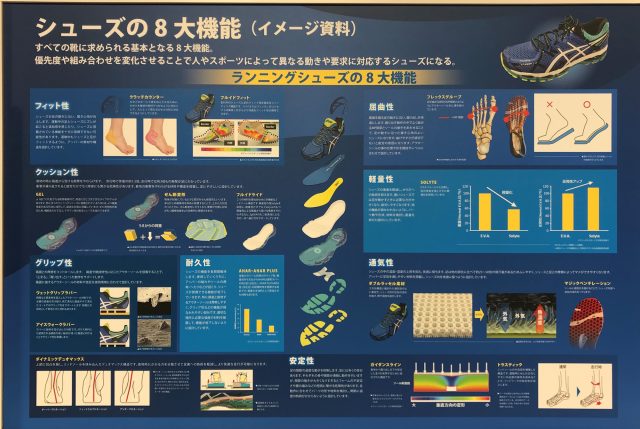
A board showing eight major functions of running shoes (Photo courtesy of Asics)
Contributing to the local community by helping raise the youth through sports
Asics Sports Museum holds and sponsors various events to realize the museum’s founding philosophy of “contributing to the local community by helping raise the youth through sports.”
The museum’s Sports Environment Field Study initiative, for example, lectures elementary school students on the importance of protecting the global environment and asks that they collect unnecessary sportswear from their homes and send it to refugees around the world. Former of J. League and Nadeshiko League players become Yume Sensei (commonly known as “Yumesen”). Kids are given activities to do that stressed the importance of having dreams and cooperating with friends.
Currently, the company also holds “miniature shoe workshops” locally and online. Here, shoe parts made of shoe scraps from shoe manufacturing are joined together with glue to create three-dimensional shoes that are about 8 cm long.
They are designed to look the same as real Asics shoes. These workshops give people a chance to appreciate the fun of making things and the importance of taking care of what you have while making them. It’s suitable not only for kids but for adults too. New employees at Asics are also asked to make miniature shoes as part of their training, where they assemble nine parts, understand the structure of the shoe, and learn the fun and difficulty of making things.
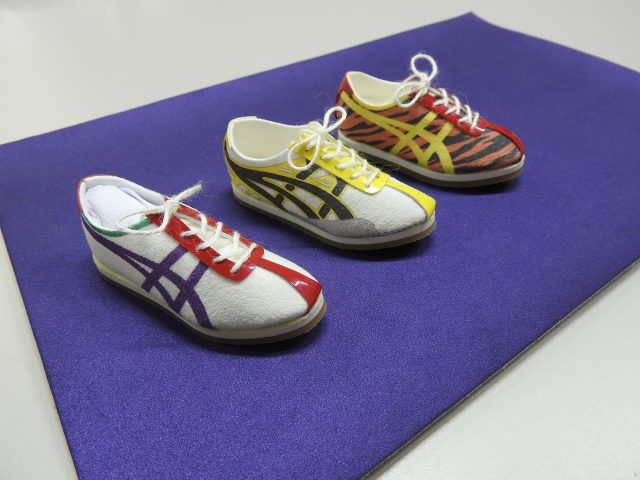
Workshops make miniature shoes (Photo courtesy of Asics)
A history of emotion created by sports in the shoes of the past
The Asics Sports Museum is a place where visitors can rediscover how the excitement of top-level sports is created from a behind-the-scenes perspective, as well as the history of the evolution of sports. It is truly a place for sharing history and stories, which not only contributes to the branding of the company by conveying the excitement of sports but also to sports culture. Stop by and see how your favorite athletes are supported by sports equipment.
